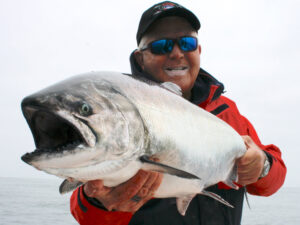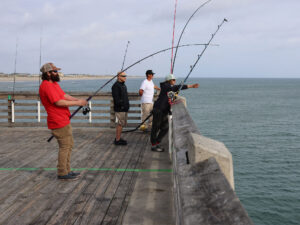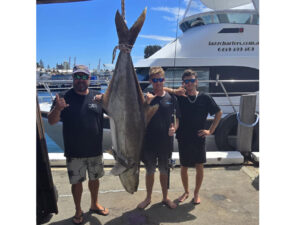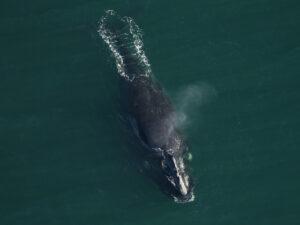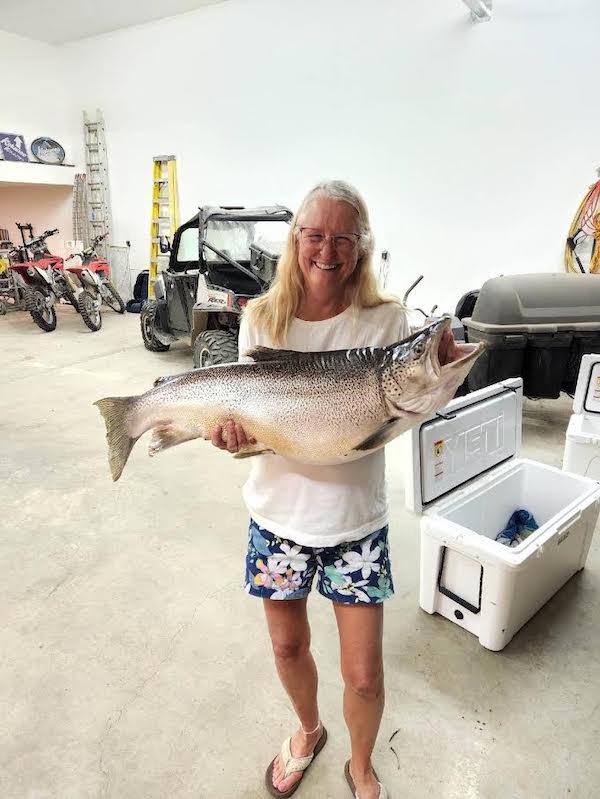
The family cabin fishing area on Washington’s 1,100-acre Loon Lake, north of Spokane, has proven yet again to be a hot spot for a likely state and world record tiger trout.
Cathy Clegg, of Colbert, Washington, was soaking nightcrawlers Aug. 7 when she got a strike from a heavy fish and the action turned hot in a hurry.
“It took off three or four times, screaming drag,” she told Northwest Sportsman. “He jumped out of the water. I’d never seen that in Loon Lake – it looked like a salmon [kokanee].
Her son Caylun Peterson netted the massive tiger trout 10 minutes later, and soon the oversize pending world record was Clegg’s.
“I was shaking,” said the retired computer tech. “Silvers [kokanees] will spin and come off, but not this time.”
On certified scales, Clegg’s tiger trout weighed 27.42-pounds, with a 35.5-inch length and 28.125 inch girth. Washington Department of Fish and Wildlife [WDFW] biologist Danny Garrett verified the catch and paperwork and has forwarded it to officials for state certification.
It’s astonishing that Caylun Peterson, Clegg’s son, netted her fish, because Peterson is the current state and IGFA All-Tackle World Record holder for tiger trout. His fish was caught from Loon Lake last year on June 21, using a nightcrawler for bait on Loon Lake. Peterson’s trout weighed 24.5 pounds, with a 34.5-inch length, and a 25-inch girth.
His mother’s fish is nearly three pounds heavier, and easily should qualify for a new Washington State record tiger trout, as well as an IGFA All Tackle World Record for the species.
When asked if there’s a family fishing rivalry, Clegg said, “Oh, no. We go hunting together, we go fishing together, we just do a lot of outdoors stuff. I go elk hunting with him and help call them in.
“He’s really excited with the record. I almost feel bad – not really.”
Tiger trout are a hybrid cross between female brown trout and male brook trout. They can occur naturally in the wild, but most tigers are stocked and are unable to reproduce.
Tigers were presumably stocked in Loon Lake, along with some other Washington waters, to feed on invasive baitfish species. Loon Lake tigers are believed to grow big and fast because they are ravenous predators and dine on the lake’s prolific kokanee salmon population.
Clegg reports that she’s watched tiger trout grow big in Loon Lake over the years, with her son catching progressively heavier fish through time. Clegg emphasizes that lots of patience is the key to catching tigers, while concentrating fishing at dawn and dusk.
Clegg is having her record tiger mounted by a taxidermist, who’ll be coming by to drop off her son’s old record trout mount, while picking up Clegg’s fish for new taxidermy work.
“So we’ll have two ridiculously huge mounted fish,” she says.

